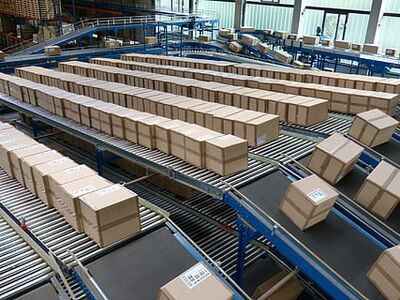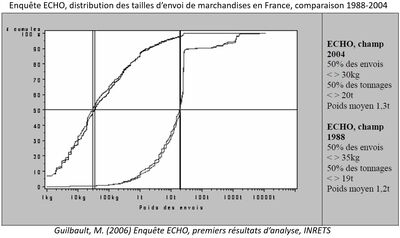Detailed view
Shippers and transport organisers survey (ECHO)
Renewed annually since 2017 in a reduced form, this survey enables us to study the characteristics of freight transport, the links between freight transport and supply chains, and the economic and environmental impacts of freight transport.
A number of transport operations are observed. For each of them, information is gathered on the characteristics of the shipment transported, the characteristics of the shipper, the consignee and their relationship, the characteristics of the means used to carry out the transport, and the characteristics of the economic agents involved in organizing and carrying out the transport. This survey is similar to Commodity Flow Surveys, which target shippers. These surveys are rare in the world (only France, the United States, Sweden and Japan have carried them out).
The ECHO survey is unique in the world in terms of the detail and nature of the information collected. The sample for the 2004-2005 wave is around 3,200 shippers, as well as tracking 9,700 shipments for which all operators are surveyed. Recent waves (since 2016) include 1,000 observations each. They are progressively enriched; stock and out-of-stock data have been observed since 2020. The protocol for these surveys has been taken over by PEPR MOBIDEC.
Practical information
Themes/sub-themes
- Environment and Territories
- Data processing
Industrial sector(s)
- Railway industries
- Automotive industries
Laboratory
- AME / SPLOTT - Systèmes Productifs, Logistique, Organisation des Transports et Travail
Field of expertise
- Surveys
- Logistics
- Freight Transportation
Some photos
The platform in detail
This survey makes it possible to study the characteristics of freight transport, the link between freight transport and logistics, and the economic and environmental impacts of freight transport. The results can be analyzed from the perspective of shippers, by characterizing the determinants of the choice of transport. This involves analyzing the organization of production systems (industrial organization, trade configuration, logistics choices) and their implications on transport in terms of shipment characteristics (size, frequency, value, distance, etc.) and transport constraints (lead times, reliability, costs, etc.). Second, from the perspective of the carriers, by identifying the organization of the transport markets. The analysis then focuses on the relationships between actors, including levels of decision making and subcontracting, logistics services offered, types of vehicles used, passage through logistics platforms, the nature of shipments handled, etc. They also allow for prospective modeling of transport demand and energy consumption, taking into account different logistics and transport organization schemes.
Economics of Transports, Master TRADD.


